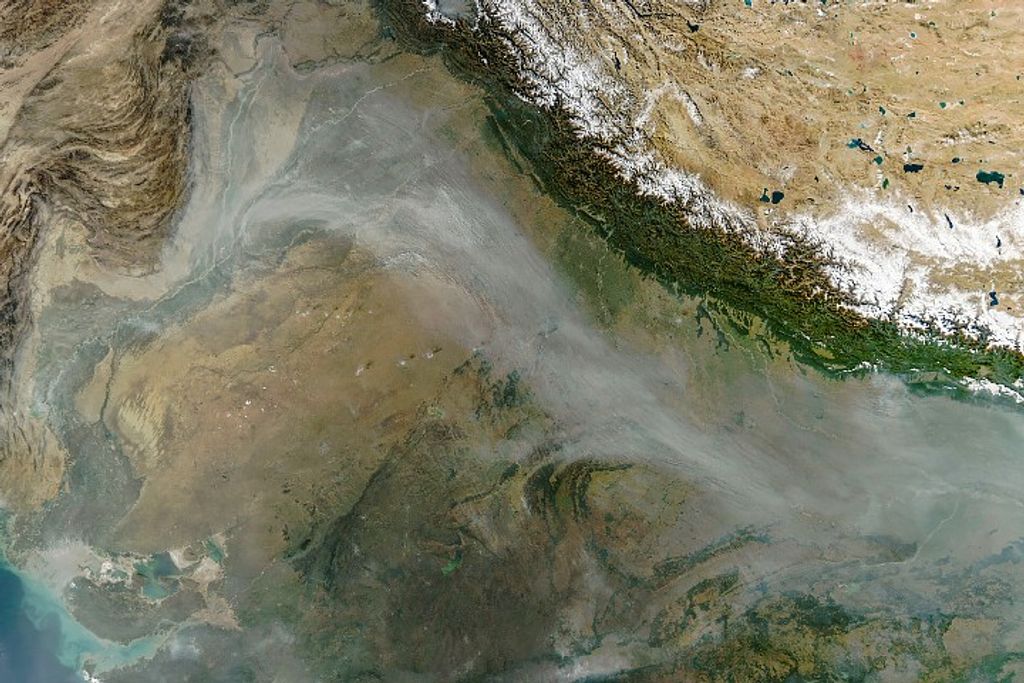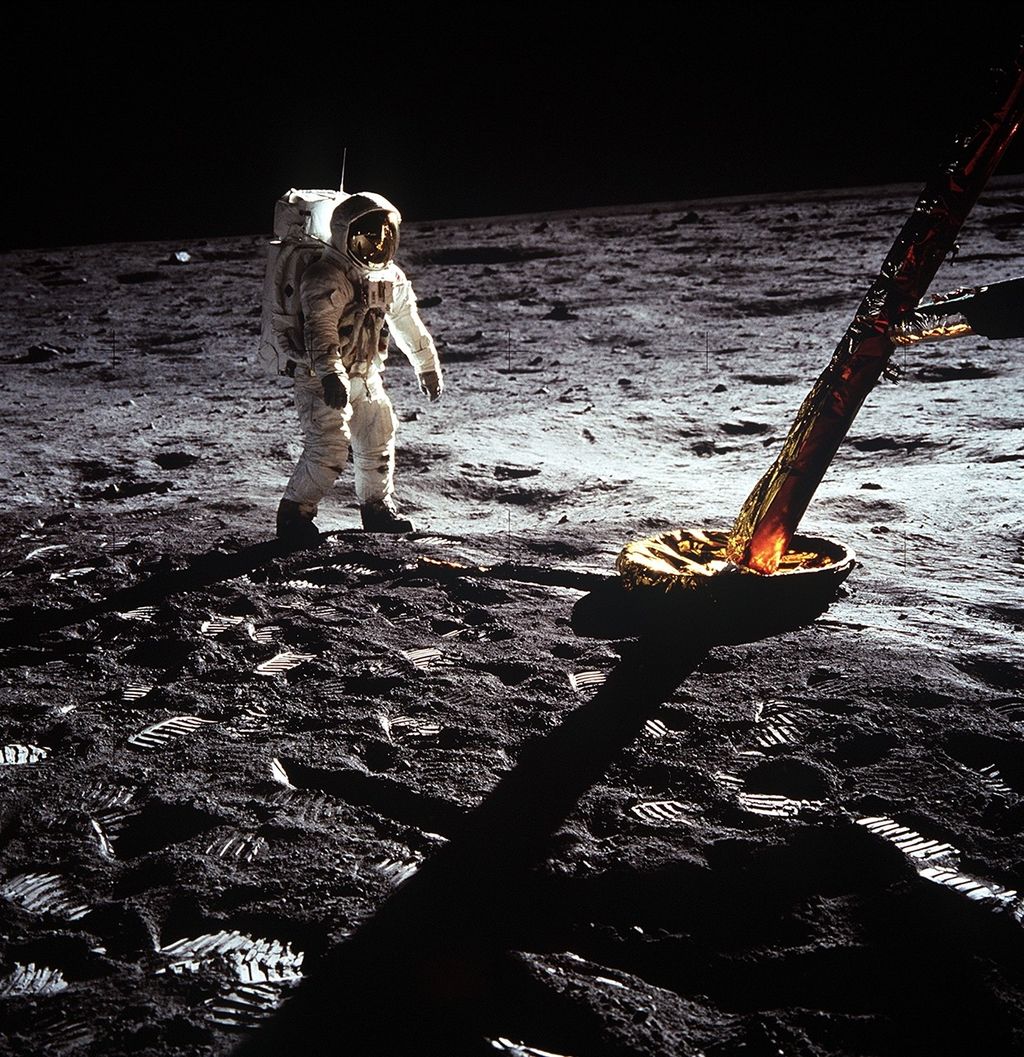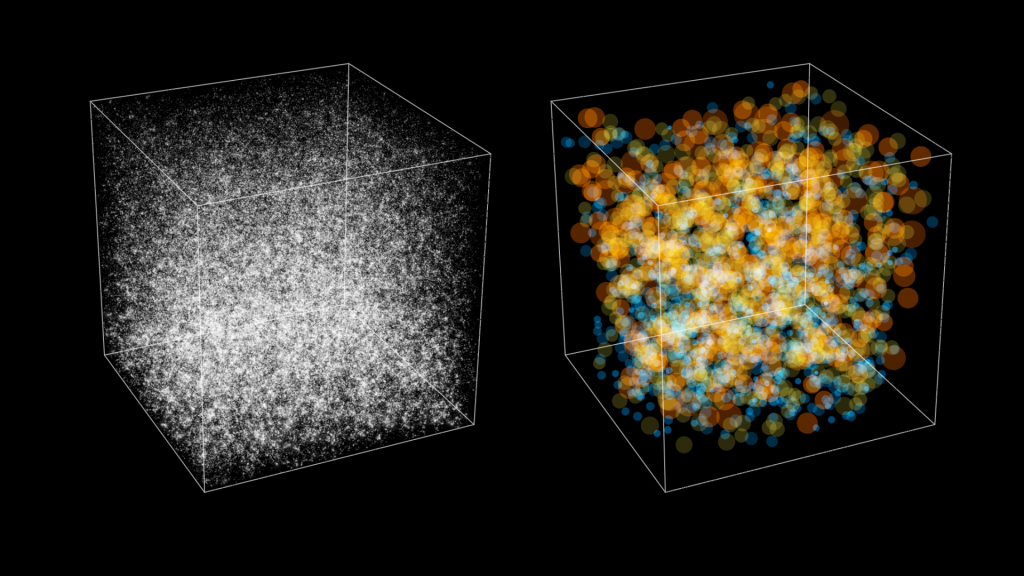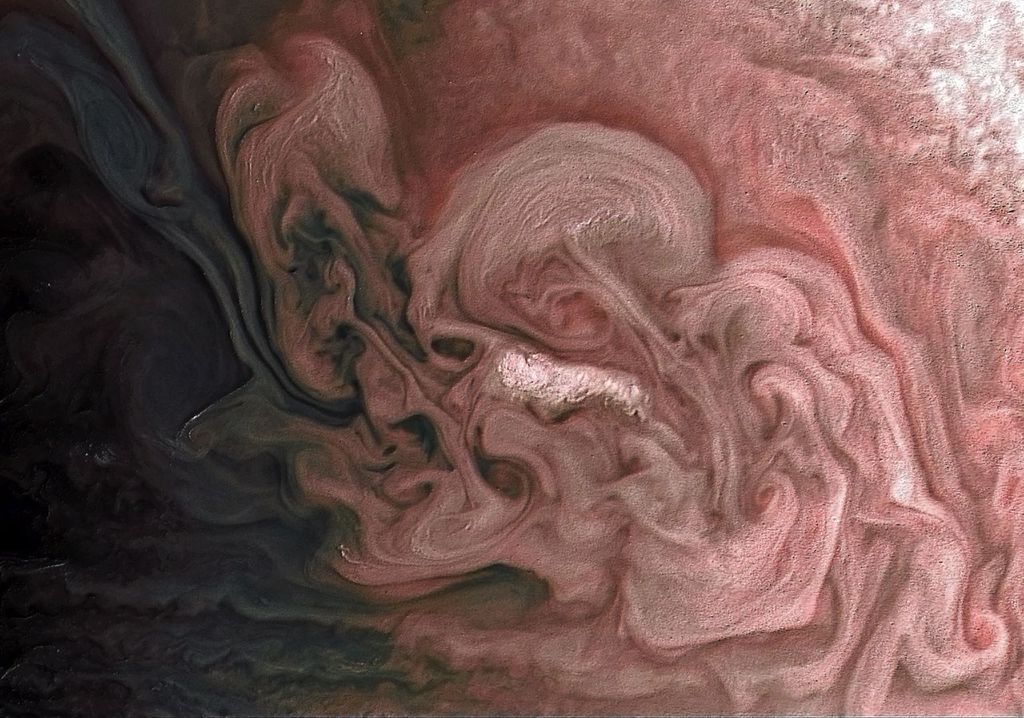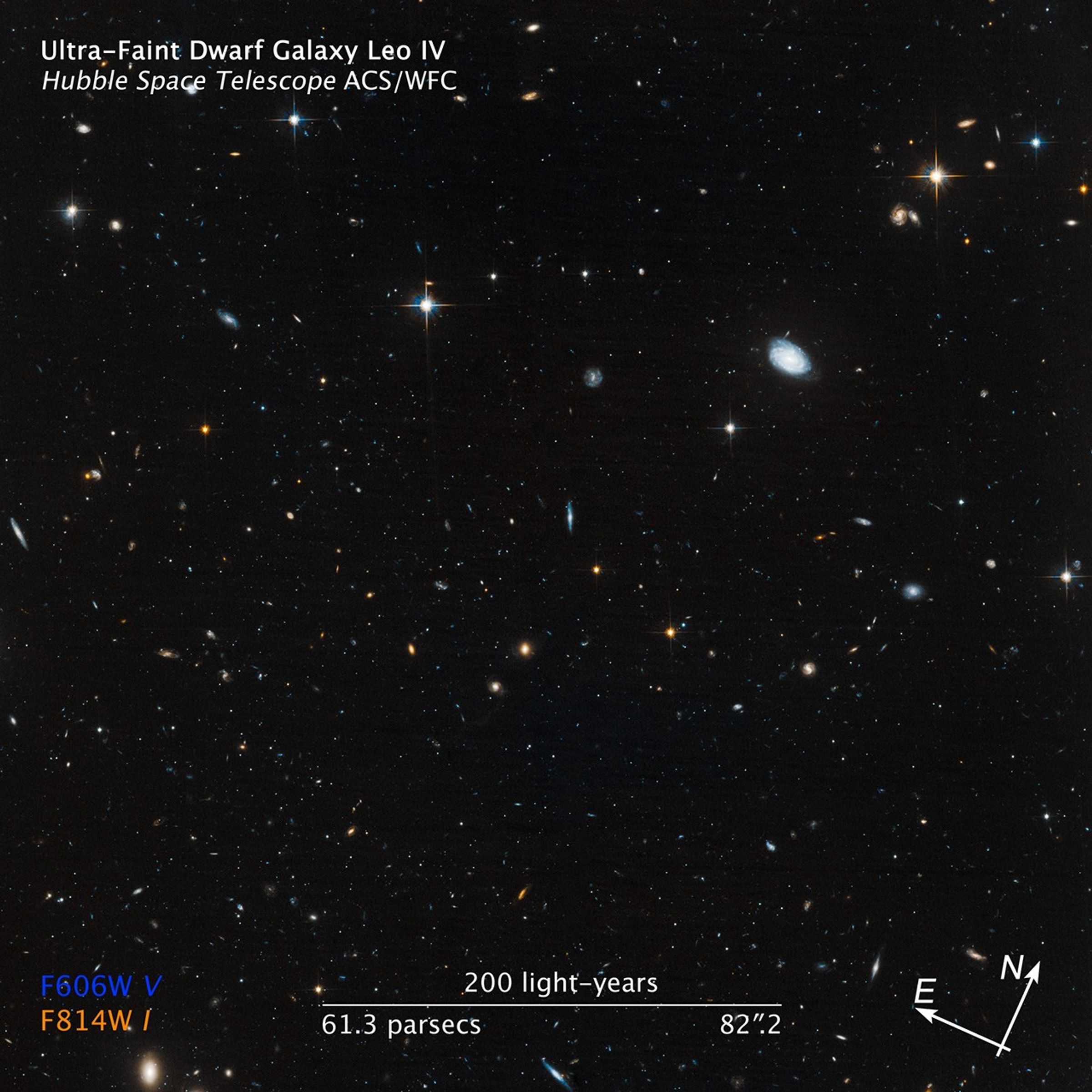1 min read
Dark Matter Simulation in Milky Way Halo
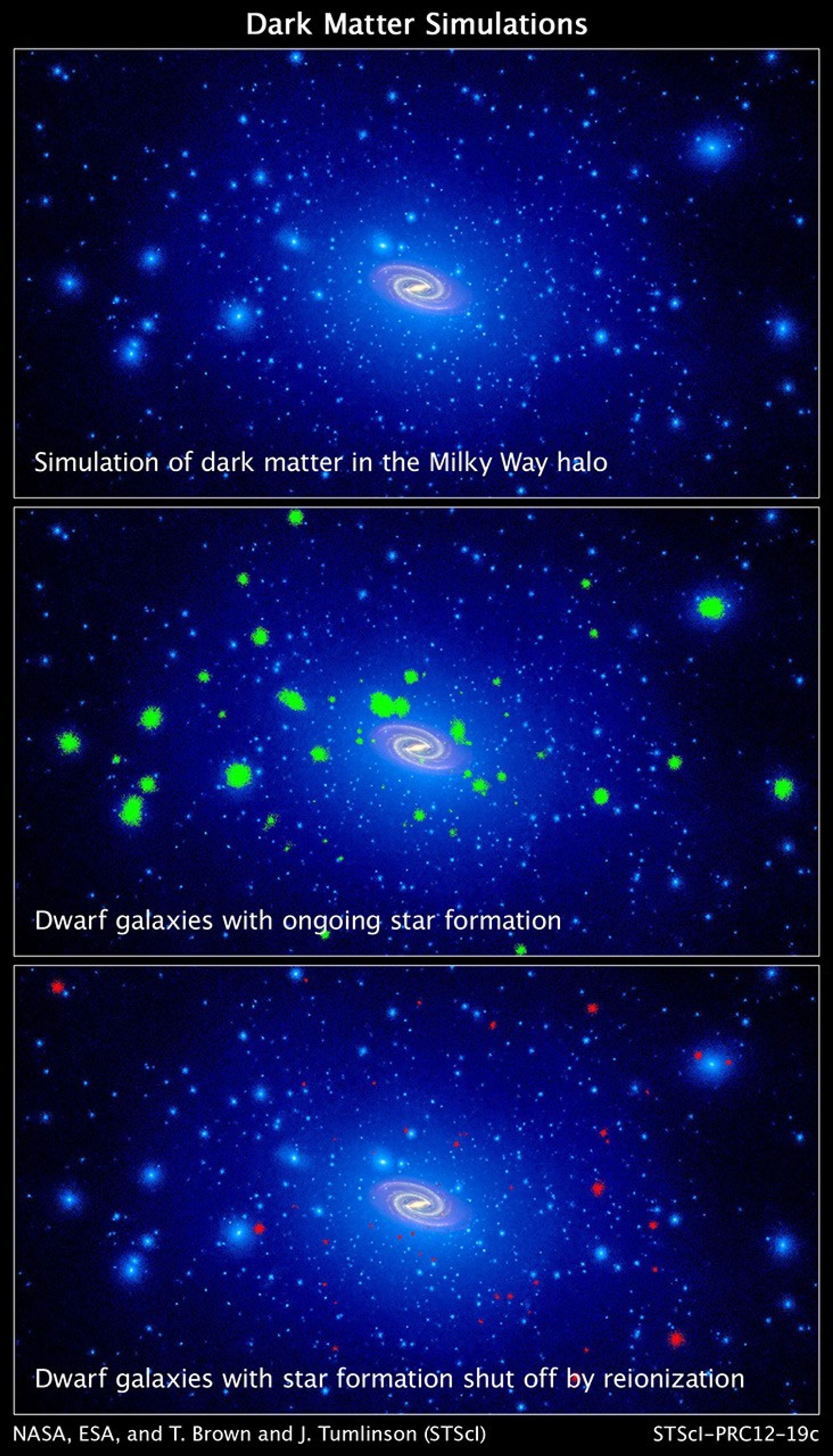
These illustrations, taken from computer simulations, show a swarm of dark matter clumps around our Milky Way galaxy. Some of the dark-matter concentrations are massive enough to spark star formation. Dark matter is an invisible substance that accounts for most of the universe's mass.
In the first panel, thousands of clumps of dark matter coexist with our Milky Way galaxy, shown in the center.
The green blobs in the second panel are those dark-matter chunks massive enough to obtain gas from the intergalactic medium and trigger ongoing star formation, eventually creating dwarf galaxies.
In the third panel, the red blobs are ultra-faint dwarf galaxies that stopped forming stars long ago. New Hubble Space Telescope observations of three of the puny galaxies reveal that star-making in these faint galaxies shut down more than 13 billion years ago.
The synchronized shutdown is evidence that a global event, such as reionization, swept through the early universe. Reionization is a transitional phase in the early universe when the first stars burned off a fog of cold hydrogen.
Popular theory predicts that most of the Milky Way's satellites contain few, if any, stars and are instead dominated by dark matter. More than a dozen small-fry galaxies have been found so far, all by the Sloan Digital Sky Survey, which scanned just a quarter of the sky.
- Object NameObject NameA name or catalog number that astronomers use to identify an astronomical object.Milky Way
- Release DateJuly 10, 2012
- Science ReleaseHubble Unmasks Ghost Galaxies
- Credit
Related Images & Videos
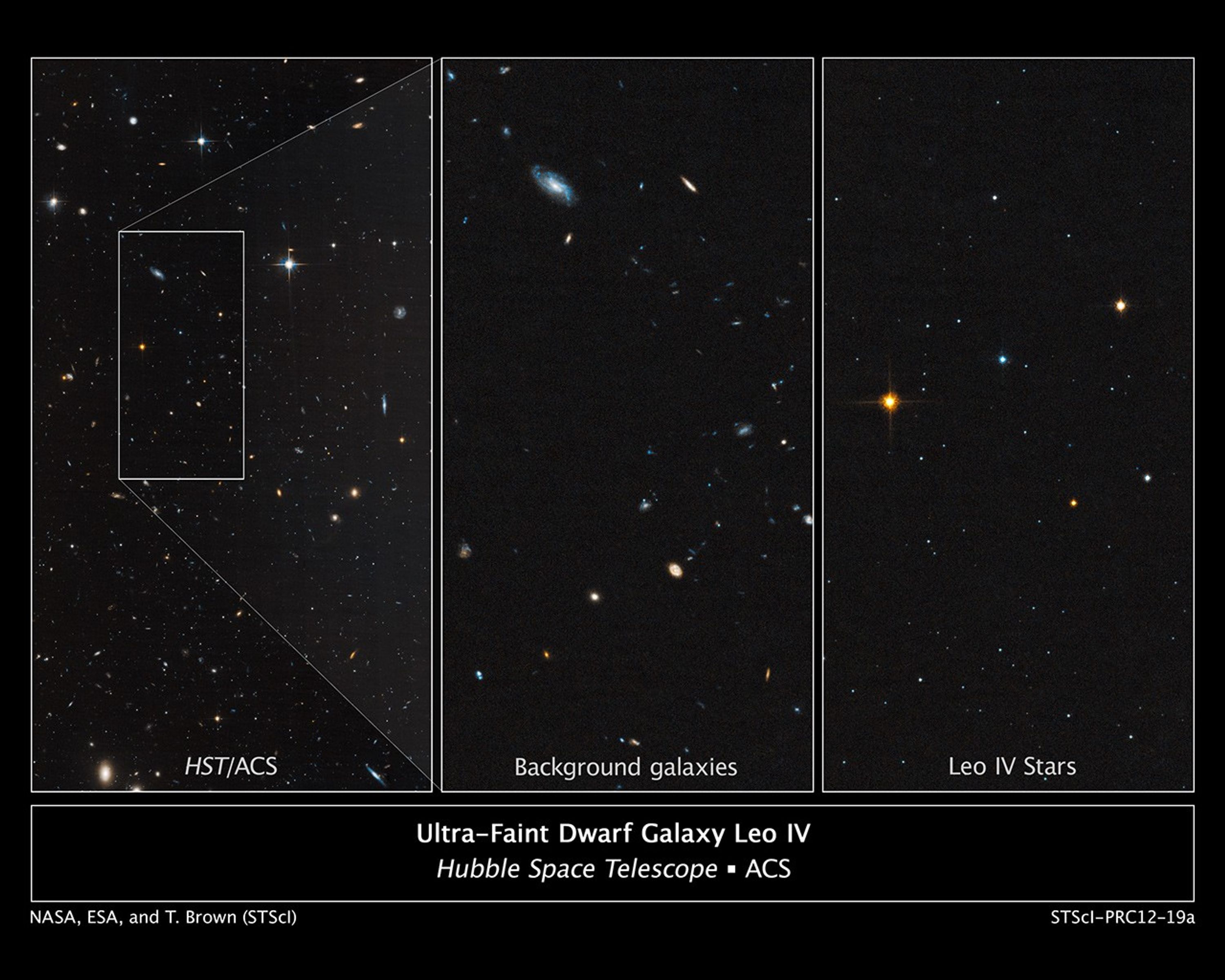
Ultra-Faint Dwarf Galaxy Leo IV
Astronomers used the Hubble Space Telescope to unmask the dim, star-starved dwarf galaxy Leo IV. These Hubble images demonstrate why astronomers had a tough time spotting this small-fry galaxy. The image at left shows part of the galaxy, outlined by the white rectangular box....
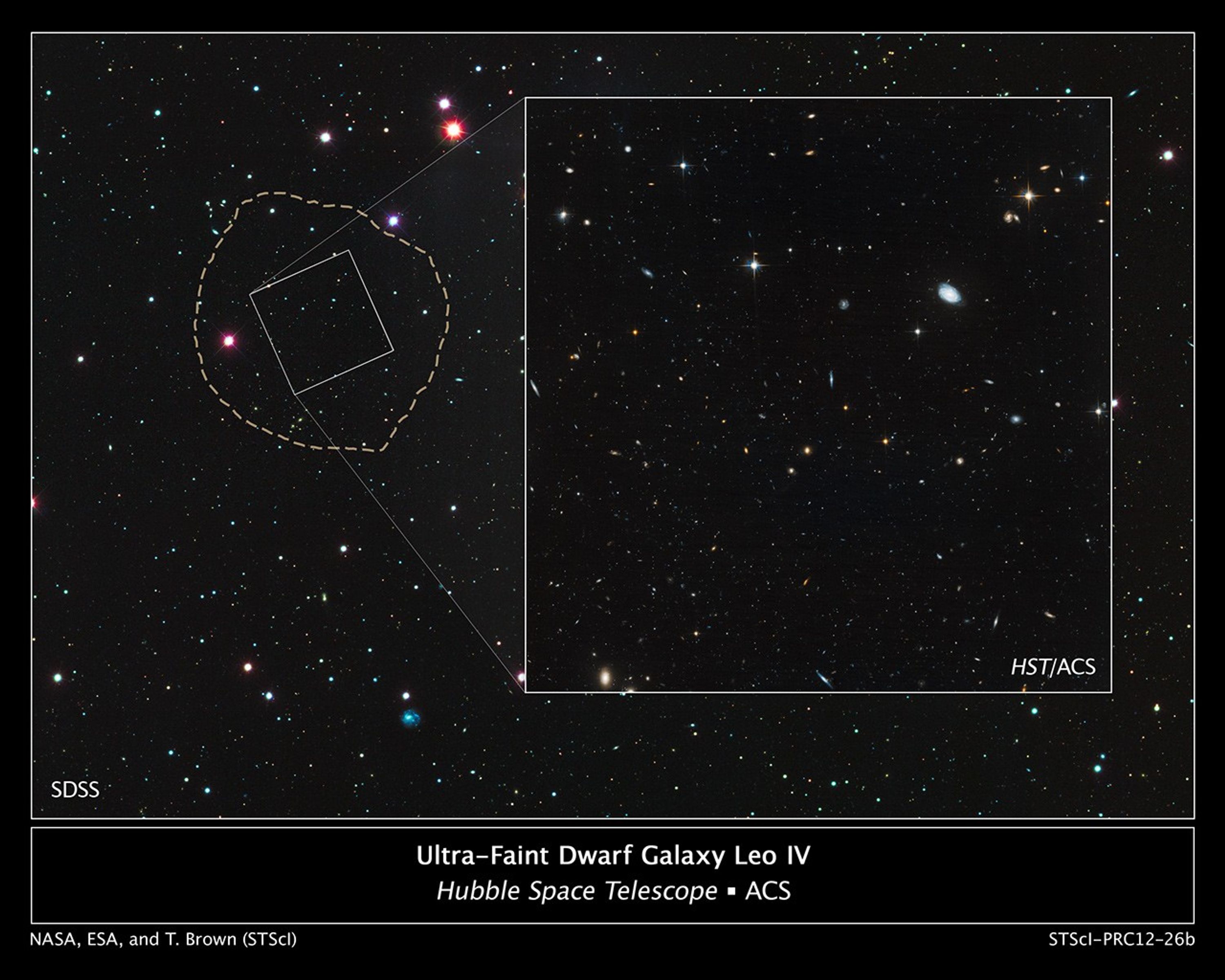
Location of Ultra-Faint Dwarf Galaxy Leo IV
These images reveal the small and faint star-starved dwarf galaxy Leo IV, a close neighbor of our Milky Way galaxy. Leo IV is one of more than a dozen ultra-faint dwarf galaxies found lurking around the Milky Way. These galaxies are dominated by dark matter, an invisible...
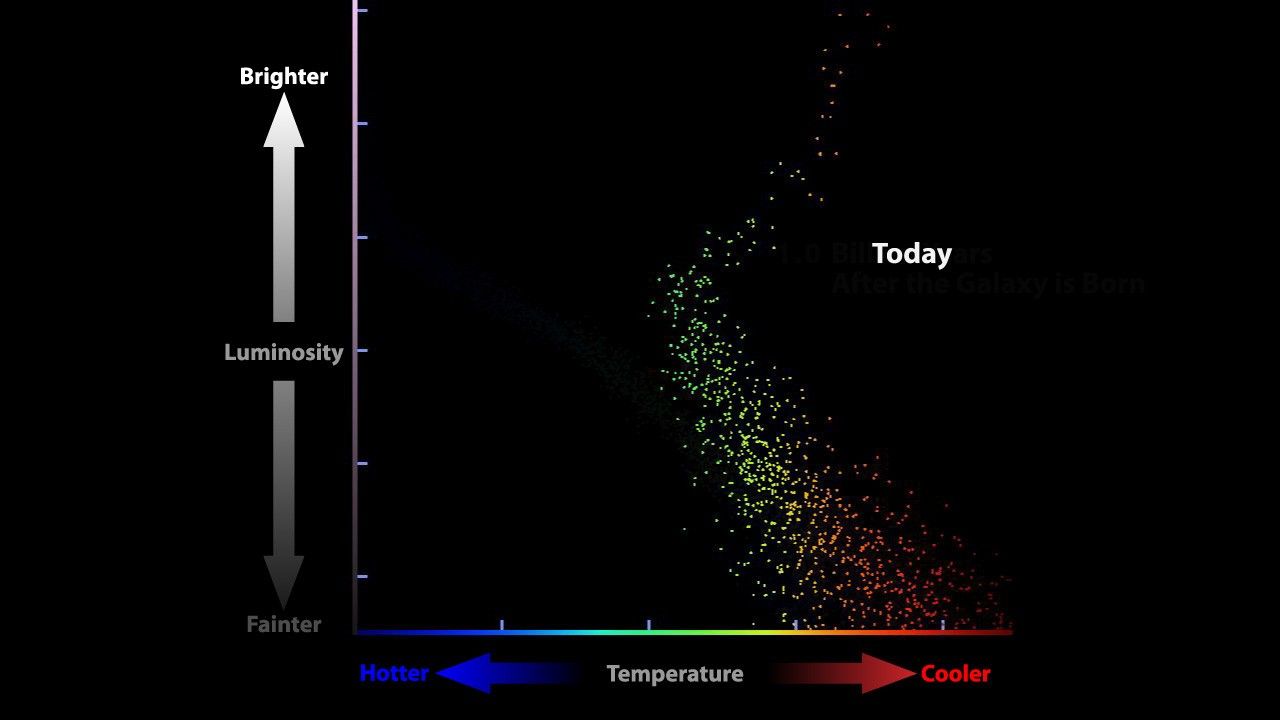
The Evolution of the Stars in the Leo IV Galaxy
This movie shows the evolution of the stars in Leo IV, a dim dwarf galaxy in the halo of our Milky Way galaxy. The Hubble Space Telescope measured the ages of these faint stars in Leo IV and two other similar galaxies, dubbed ultra-faint dwarf galaxies. The Hubble observations...
Share
Details
Claire Andreoli
NASA’s Goddard Space Flight Center
Greenbelt, Maryland
claire.andreoli@nasa.gov









